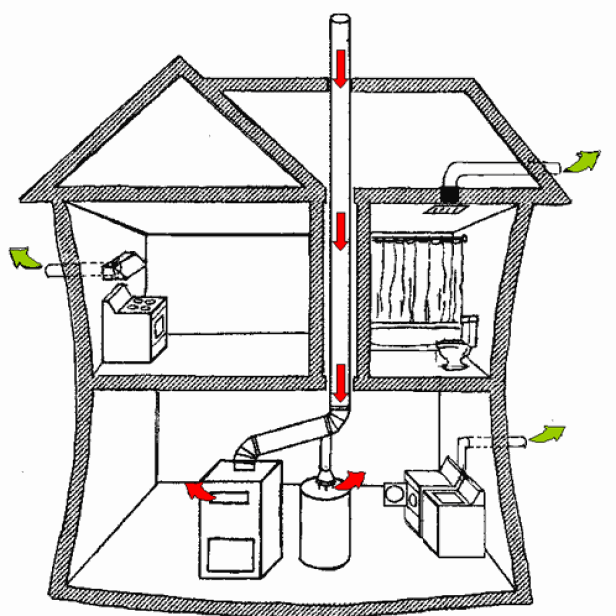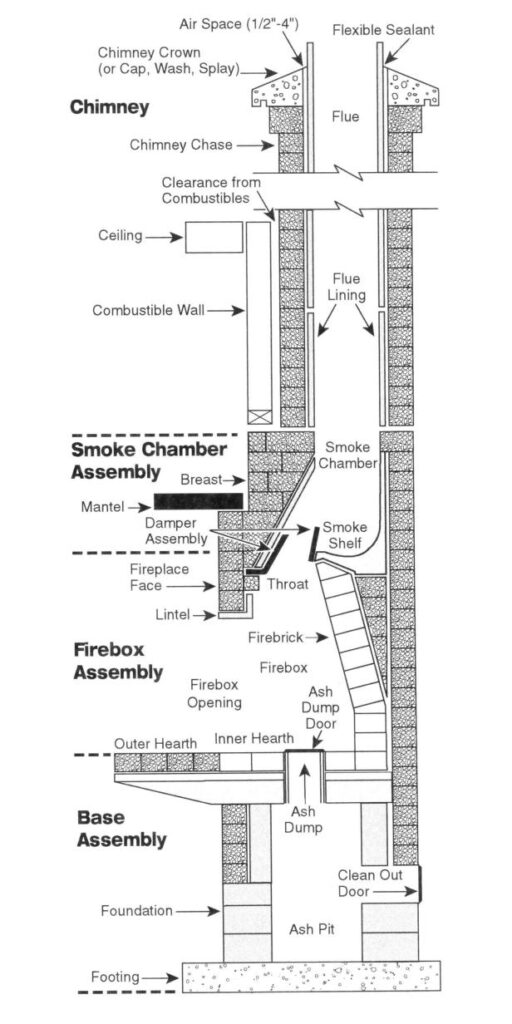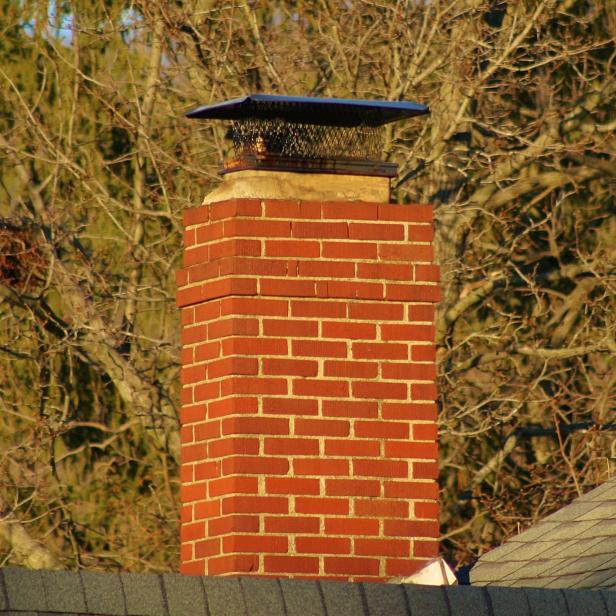It’s that time of year again. As the weather turns colder, many of us start thinking about stocking up on wood or flipping on the gas fireplace to keep our homes warm and inviting. Whether you have a cozy wood-burning fireplace or a sleek gas fireplace, taking proper care of it is essential for both safety and efficiency. In this article, we will explore the importance of regular maintenance, the differences between wood-burning and gas fireplaces, and provide tips and best practices for keeping your fireplace in top shape. From cleaning and inspecting to ensuring safe operation and improving efficiency, we’ve got you covered. So sit back, relax, and let’s dive into the wonderful world of fireplace maintenance.
Table of Contents
ToggleIntroduction to Fireplace Maintenance
Welcome to the world of fireplace maintenance! In this comprehensive article, we will explore the importance of regular maintenance for both efficiency and safety when it comes to your beloved fireplace. Whether you have a wood-burning fireplace or a gas fireplace, proper care is essential to ensure optimal performance and to prevent any potential hazards.
Throughout this article, we will delve into the specific maintenance needs of each type of fireplace, highlighting their differences and similarities. So, let’s get started and learn how to keep your fireplace in top-notch condition!
Maintaining Wood-Burning Fireplaces
Cleaning the fireplace and chimney: Tools and techniques
Regular cleaning of your wood-burning fireplace and chimney is vital to maintaining its efficiency and safety. To remove ash and debris from the firebox, you will need a sturdy ash shovel or a specialized ash vacuum cleaner. Use a brush or chimney sweep to clean the chimney thoroughly, ensuring the removal of any creosote buildup. Remember to wear protective gear, such as gloves and goggles, throughout the cleaning process to keep yourself safe.
Selecting and storing firewood for optimal burning and minimal soot
The quality of the firewood used in your wood-burning fireplace can significantly impact its performance. It is recommended to choose seasoned hardwood, such as oak or maple, which burns more efficiently and produces less soot. Make sure to store the firewood in a dry place to prevent moisture content and ensure it is properly seasoned.
Checking for blockages, creosote buildup, and signs of wear
Regularly inspect your wood-burning fireplace for any blockages, such as bird nests or debris, which can obstruct the airflow and decrease efficiency. Additionally, keep an eye out for creosote buildup, a highly flammable substance that can accumulate on the chimney walls. Signs of wear, such as cracked bricks or loose mortar, should also be addressed promptly to prevent further damage to your fireplace.

Caring for Gas Fireplaces
Routine cleaning and inspection of gas burners, vents, and connections
Although gas fireplaces may require less maintenance than their wood-burning counterparts, routine cleaning and inspection are still crucial. Clean the gas burners and remove any dust or debris using a soft brush or cloth. Ensure that the vents and connections are clear and free from any obstructions that could affect the appliance’s performance.
Understanding common issues like pilot light problems and gas leaks
Gas fireplaces can encounter common issues, such as pilot light problems and gas leaks. If you notice that the pilot light is not igniting or staying lit, it may require adjustment or cleaning. Gas leaks, on the other hand, can pose a serious safety risk and should be addressed immediately. If you smell gas or suspect a leak, turn off the gas supply and contact a professional technician for assistance.
Professional inspection and maintenance schedules
To ensure the safety and optimal functioning of your gas fireplace, it is advisable to schedule a professional inspection at least once a year. Qualified technicians can thoroughly examine the various components of your fireplace, identifying any potential problems and providing the necessary maintenance or repairs.
Safety First
Installing and maintaining smoke and carbon monoxide detectors
When it comes to fireplace safety, installing smoke and carbon monoxide detectors is non-negotiable. These devices play a critical role in alerting you to potential hazards, such as a chimney fire or the presence of carbon monoxide, a colorless and odorless gas. Make sure to test these detectors regularly and replace the batteries as needed.
Safe operation practices for both types of fireplaces
To maintain a safe environment, it is essential to follow safe operation practices for both wood-burning and gas fireplaces. Never leave a fire unattended, and ensure that the fire is completely extinguished before leaving the room or going to bed. Keep flammable objects away from the fireplace, use a sturdy fireplace screen or glass door to prevent sparks from escaping, and never overload the fireplace with excessive amounts of wood or gas.
Educating family members on fireplace safety
Fireplace safety is a shared responsibility, and it is crucial to educate all family members, especially children, on the potential dangers and proper usage of the fireplace. Teach them to use caution around the fireplace, never play with the fire or its tools, and alert an adult if they notice any unusual situations.

Efficiency and Performance
Tips to improve heating efficiency and reduce emissions from wood-burning fireplaces
Wood-burning fireplaces are not only cozy but can also save money on heating costs. To maximize their heating efficiency, consider the following tips:
- Use well-seasoned hardwood for cleaner and more efficient burns.
- Place a fireplace insert, which increases efficiency and heating capacity, into your existing fireplace.
- Close the damper when the fireplace is not in use to prevent warm air from escaping.
- Install a grate heater or heat exchanger to circulate warm air into the room.
Reducing emissions from wood-burning fireplaces is also crucial for both indoor and outdoor air quality. Avoid burning wet or treated wood, as it can release harmful pollutants. Regular chimney sweeping and yearly inspections will ensure that your fireplace is operating optimally and producing minimal emissions.
Keeping gas fireplaces efficient through proper usage and thermostat settings
Gas fireplaces are known for their convenience and cleanliness. To maintain their efficiency, ensure proper usage and optimal thermostat settings. Avoid leaving the pilot light on when the fireplace is not in use, as it consumes unnecessary energy. Use the fireplace sparingly and adjust the thermostat to maintain a comfortable temperature without overheating the room.
Aesthetic Maintenance
Cleaning and upkeep of fireplace exteriors, glass doors, and screens
In addition to functional maintenance, keeping your fireplace aesthetically pleasing is just as important. Clean the exterior of your fireplace regularly, using a soft cloth or a mild detergent if needed. Take care when cleaning glass doors and screens, using appropriate cleaners to remove any residue or soot buildup without causing damage.
Seasonal considerations for fireplace maintenance
As the seasons change, it is essential to adapt your fireplace maintenance routine accordingly. Before the cold months, schedule a professional inspection and cleaning of your wood-burning fireplace, ensuring that it is in top condition for regular use. For gas fireplaces, have them inspected and serviced before the start of the heating season to address any potential issues.

Professional Help and DIY
When to call a professional for maintenance and repairs
While homeowners can handle many aspects of fireplace maintenance, some tasks are best left to the experts. It is advisable to call a certified chimney sweep for thorough chimney cleanings, particularly when dealing with creosote buildup or bird nests. Additionally, if you encounter any complex issues or suspect a gas leak in your gas fireplace, reach out to a qualified technician immediately for expert assistance.
DIY maintenance tips for responsible homeowners
For responsible homeowners who like to take matters into their own hands, there are several DIY maintenance tips to keep in mind. Regularly inspect your fireplace for any signs of wear, such as cracks in the brickwork. Use a flashlight to check the chimney for any nesting animals or debris. Keep the area surrounding the fireplace clean and free from flammable materials. Additionally, ensure that the damper operates smoothly and that the fire grate is properly positioned.
Conclusion
Regular maintenance is the key to extending the life and retaining the beauty of your fireplace. By following the tips and best practices mentioned in this article, you can ensure that your wood-burning or gas fireplace operates efficiently and safely. So, make fireplace maintenance a part of your routine and enjoy the warmth, comfort, and ambiance it adds to your home year-round!



